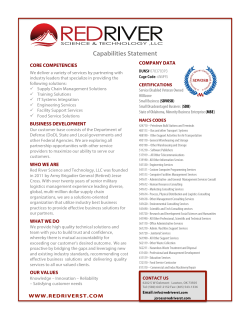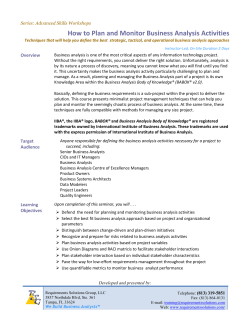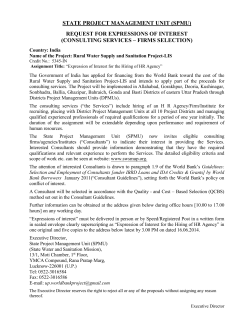
How to Build a Stakeholder Network For Learning, Trust and Innovation
Notes for Practitioners Series: CoreRelation Consulting Inc. How to Build a Stakeholder Network For Learning, Trust and Innovation Ann Svendsen and Myriam Laberge April, 2007 “We belong to one inescapable network of mutuality – mutuality of ecosystems; mutuality of freer movement of information, ideas, people, and good and services; and mutuality of peace and security. We are tied, indeed, in a single fabric of destiny on planet earth.” Miedo Nishimizu, World Bank The Challenge What Is a Stakeholder Network? The world today is increasingly complex, diverse, and interconnected. In this new reality, co -creating value with external stakeholders is a key to business success. This involves new ways of thinking about, leading in, and engaging networks to support learning, innovation and opportunity creation. Stakeholder networks are held together by the members’ shared interest or stake in a common issue. While a network may be convened by one organization, the members come together voluntarily. Stakeholder networks exist to deal with complex local and global issues including security, sustainability, health, and education. Many of us are not network builders. For short-term transactional relationships with suppliers, community groups, government officials and other stakeholders we have learned to manage in more traditional ways. We are pressured to get things done quickly and efficiently. Focusing on our own issues and goals, like blinkered horses in a race, we communicate externally to sell our ideas and move our projects forward. When we ask for input, often we have already made a decision or at least believe we have the right answer. When issues become more complex, this type of relationship management approach limits our ability to gather new information, learn, build trust and to innovate in ways that create sustainable value for our own organization, for our stakeholders and society. CoreRelation Consulting Copyright ©2007 CoreRelation Consulting Inc. All rights reserved. How to Build a Stakeholder Network: For Learning, Trust and Innovation Why Build Networks? There are three main reasons for building stakeholder networks: enhanced learning and innovation, trust-building and capacity to manage change: ■ Learning and Innovation: “None of us is as smart as all of us.” Thinking together with others can help generate sustainable and innovative solutions to organizational and societal issues. ■ Trust and Support: Given the right process, network members build trust, mutual understanding and a sense of common identity and purpose. They are more likely to share ideas and information, respect confidentiality, and put the good of the network ahead of their short- term self interest. ■ Capacity to Manage Change: Over time, effective networks develop collective knowledge and intelligence, new capacities and governance structures that allow them to address increasingly difficult issues. How to Build a Network 1. Understand the Issue and Map the Network First, define your issue, problem or opportunity and decide whether you need the ideas and involvement of others. If the issue is straightforward, if you have the authority and power to implement the decision, and/or if a decision has already been made, convening a network is likely unnecessary or inappropriate. Once you have the internal support to proceed, develop a stakeholder network map. Then reach out and talk to some of the people who have a stake and are respected and well connected. Find out what they think. Is the issue important to them? What do they want to happen? What questions are they asking? Would they be willing to help convene a network to find new solutions? 2. Build Relationships and Connections At this point you (and perhaps a few allies) will be serving as the ‘hub’ in the emerging network. Your job is to connect those who have a shared interest in the issue, disseminate information, and encourage further discussion. This phase is about building relationships, a clearer framing of the issue and the commitment of individuals and organizations to get engaged. 3. Establish Goals and Ground Rules At some point key stakeholders will be willing to meet. Before tackling the central question or issue, participants must be ready to enter into a new conversation and be open to the possibility that something new can emerge. At the first meeting of the network, members will need to: ■ ■ Define the goals and objectives of the group; Agree on the process and guiding principles that will shape how the members deal with one another; ■ Define roles and responsibilities; ■ Establish communication protocols, and ■ Develop the network’s learning agenda. A neutral facilitator may help the network get established. Rather than controlling or directing what the network does, developmental facilitators act as catalysts to help participants deal with blockages and inertia. They also play an important role in helping the network adapt to the tensions that arise out of the differences and diversity and build coherence amongst the group as a whole. Ann Svendsen and Myriam Laberge are Directors of Collaborative Learning and Innovation at Simon Fraser University’s Centre for Sustainable Community Development (www.sfu.ca/cscd/cli) and partners in CoreRelation Consulting Inc. www.corerelation.com . For further information please contact us at 604-437-6112 or 604-943-9133. CoreRelation Consulting Copyright ©2007 CoreRelation Consulting Inc. All rights reserved.
© Copyright 2025





















